Showing Spotlights 241 - 248 of 546 in category All (newest first):
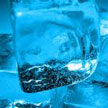 Ice accumulation is not just a cost and safety problem for the airline industry and other transportation areas, together with undesired environmental impacts. Here are some examples: Transmission lines and power network towers may deform or even collapse with the burden of excess amount of ice; ice accretion on wind turbine blades can cause a production loss as much as 50% of the annual production; frost and ice accumulation in refrigerators and heat exchangers results in a decrease of heat transfer efficiency. Therefore, great efforts have been made to understand the mechanism of icing and investigations on anti-icing and deicing have been extensively carried out. Various anti-icing and deicing methods have been developed such as for instance nanocoatings and other nanostructured surfaces.
Ice accumulation is not just a cost and safety problem for the airline industry and other transportation areas, together with undesired environmental impacts. Here are some examples: Transmission lines and power network towers may deform or even collapse with the burden of excess amount of ice; ice accretion on wind turbine blades can cause a production loss as much as 50% of the annual production; frost and ice accumulation in refrigerators and heat exchangers results in a decrease of heat transfer efficiency. Therefore, great efforts have been made to understand the mechanism of icing and investigations on anti-icing and deicing have been extensively carried out. Various anti-icing and deicing methods have been developed such as for instance nanocoatings and other nanostructured surfaces.
Mar 18th, 2014
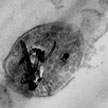 The investigation of effects of engineered nanomaterials on endothelial cells - which form the inner lining of blood vessels - is a critical safety issue. Already, various engineered nanomaterials are being designed for biomedical applications for intravascular use and other nanomaterials may reach the vasculature as a result of occupational, environmental, or other types of exposure. Researchers have now elucidated the mechanism of cytotoxicity of carboxylated MWCNTs on cultured endothelial cells and they show a new potential way of pharmacological cytoprotection against cytotoxic effect of carboxylated MWCNTs.
The investigation of effects of engineered nanomaterials on endothelial cells - which form the inner lining of blood vessels - is a critical safety issue. Already, various engineered nanomaterials are being designed for biomedical applications for intravascular use and other nanomaterials may reach the vasculature as a result of occupational, environmental, or other types of exposure. Researchers have now elucidated the mechanism of cytotoxicity of carboxylated MWCNTs on cultured endothelial cells and they show a new potential way of pharmacological cytoprotection against cytotoxic effect of carboxylated MWCNTs.
Mar 12th, 2014
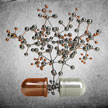 More serious than the common cold, influenza viral infection has been responsible for major epidemics and pandemic respiratory disease in communities around the world. These epidemics come with substantial morbidity and mortality, accounting for 250,000 to 500,000 worldwide deaths each year and are particularly dangerous for vulnerable and elderly populations with statistics showing that 90% of those who succumb to the severe illness are 65 years and older. The flu is also associated with high health care costs. In the U.S., more than $80 billion dollars is spent annually as a result of influenza epidemics.
More serious than the common cold, influenza viral infection has been responsible for major epidemics and pandemic respiratory disease in communities around the world. These epidemics come with substantial morbidity and mortality, accounting for 250,000 to 500,000 worldwide deaths each year and are particularly dangerous for vulnerable and elderly populations with statistics showing that 90% of those who succumb to the severe illness are 65 years and older. The flu is also associated with high health care costs. In the U.S., more than $80 billion dollars is spent annually as a result of influenza epidemics.
Mar 3rd, 2014
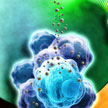 Nanotechnology has made great strides in biology and medicine in the past year. Here is a list of the top 10 developments in Nanodermatology in 2013, as compiled by the Nanodermatology Society. These topics will be the subject of multiple talks and two sessions at the American Academy of Dermatology Annual Meeting on March 21-25, 2014 in Denver. This, however, is just a sampling of the topics to be covered and world class speakers in medical nanotechnology.
Nanotechnology has made great strides in biology and medicine in the past year. Here is a list of the top 10 developments in Nanodermatology in 2013, as compiled by the Nanodermatology Society. These topics will be the subject of multiple talks and two sessions at the American Academy of Dermatology Annual Meeting on March 21-25, 2014 in Denver. This, however, is just a sampling of the topics to be covered and world class speakers in medical nanotechnology.
Feb 24th, 2014
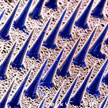 Biological barriers - the skin, mucosal membranes, the blood-brain barrier and cell/nuclear membranes - seriously limit the delivery of drugs into the desired sites within the body, resulting in a low delivery efficacy, poor therapeutic efficacy, and high cost. Nanomedicine researchers have developed numerous biological, chemical, and physical strategies to overcome these barriers. This article highlights recent advanced physical approaches for transdermal and intracellular delivery.
Biological barriers - the skin, mucosal membranes, the blood-brain barrier and cell/nuclear membranes - seriously limit the delivery of drugs into the desired sites within the body, resulting in a low delivery efficacy, poor therapeutic efficacy, and high cost. Nanomedicine researchers have developed numerous biological, chemical, and physical strategies to overcome these barriers. This article highlights recent advanced physical approaches for transdermal and intracellular delivery.
Feb 13th, 2014
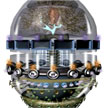 An artificial brain building program has created a process of circuit evolution similar to the human brain in an organic molecular layer. The research team has now finalized their human brain model and introduced the concept of a new class of computer which does not use any circuit or logic gate. The kind of CMOS based integrated chip that forms the core of existing supercomputers will not be used in this kind of computer. The team uses the term brain jelly to describe their purely organic computing architecture.
An artificial brain building program has created a process of circuit evolution similar to the human brain in an organic molecular layer. The research team has now finalized their human brain model and introduced the concept of a new class of computer which does not use any circuit or logic gate. The kind of CMOS based integrated chip that forms the core of existing supercomputers will not be used in this kind of computer. The team uses the term brain jelly to describe their purely organic computing architecture.
Feb 10th, 2014
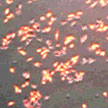 Numerous previous research results have shown that gold nanorods (Au NRs) are able to effectively kill tumors upon irradiation with high laser doses, leading to hyperthermia-induced destruction of cancer cells (photodynamic therapy, PTT). In new work, researchers have demonstrated for the first time that bare gold nanorods alone can exert unprecedented photodynamic therapeutic (PDT) effects to result in cancer cellular deaths at low laser doses. Moreover, it appears that Au NRs-mediated PDT effects are far more effective in destruction of tumors in mice than the Au NRs-mediated PTT effects.
Numerous previous research results have shown that gold nanorods (Au NRs) are able to effectively kill tumors upon irradiation with high laser doses, leading to hyperthermia-induced destruction of cancer cells (photodynamic therapy, PTT). In new work, researchers have demonstrated for the first time that bare gold nanorods alone can exert unprecedented photodynamic therapeutic (PDT) effects to result in cancer cellular deaths at low laser doses. Moreover, it appears that Au NRs-mediated PDT effects are far more effective in destruction of tumors in mice than the Au NRs-mediated PTT effects.
Jan 13th, 2014
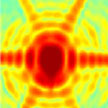 Following extensive research in the field of bionano-interfaces, it is now well understood that the primary interaction of biological species with nanoparticles is strongly dependent to the long-lived protein corona, i.e. a strongly adsorbed protein layer at the surface of nanoparticles. The amount, composition, and exposure site of the associated proteins in the long-lived protein corona can define the biological response to the nanoparticles and hence reveal their biological fate. Scientists have now shown that laser plasmonic heat induction leads to significant changes in the protein corona composition at the surface of gold nanorods.
Following extensive research in the field of bionano-interfaces, it is now well understood that the primary interaction of biological species with nanoparticles is strongly dependent to the long-lived protein corona, i.e. a strongly adsorbed protein layer at the surface of nanoparticles. The amount, composition, and exposure site of the associated proteins in the long-lived protein corona can define the biological response to the nanoparticles and hence reveal their biological fate. Scientists have now shown that laser plasmonic heat induction leads to significant changes in the protein corona composition at the surface of gold nanorods.
Dec 18th, 2013
 Ice accumulation is not just a cost and safety problem for the airline industry and other transportation areas, together with undesired environmental impacts. Here are some examples: Transmission lines and power network towers may deform or even collapse with the burden of excess amount of ice; ice accretion on wind turbine blades can cause a production loss as much as 50% of the annual production; frost and ice accumulation in refrigerators and heat exchangers results in a decrease of heat transfer efficiency. Therefore, great efforts have been made to understand the mechanism of icing and investigations on anti-icing and deicing have been extensively carried out. Various anti-icing and deicing methods have been developed such as for instance nanocoatings and other nanostructured surfaces.
Ice accumulation is not just a cost and safety problem for the airline industry and other transportation areas, together with undesired environmental impacts. Here are some examples: Transmission lines and power network towers may deform or even collapse with the burden of excess amount of ice; ice accretion on wind turbine blades can cause a production loss as much as 50% of the annual production; frost and ice accumulation in refrigerators and heat exchangers results in a decrease of heat transfer efficiency. Therefore, great efforts have been made to understand the mechanism of icing and investigations on anti-icing and deicing have been extensively carried out. Various anti-icing and deicing methods have been developed such as for instance nanocoatings and other nanostructured surfaces.

 Subscribe to our Nanotechnology Spotlight feed
Subscribe to our Nanotechnology Spotlight feed





